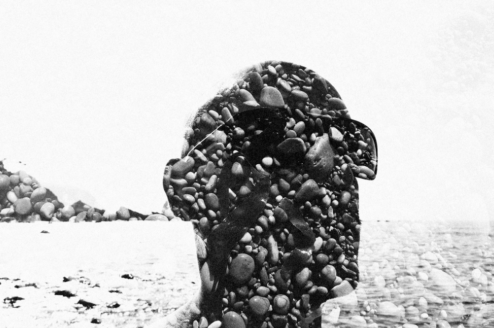Although its name scares, "Double Exposure" , I don't know a photographic technique that has caused as much inspiration in photographers as this one. As an amateur photographer it would be a shame if you let this topic go by, as difficult as it might seem, wasting the GIANT flow of creative photographs that you could get thanks to this technique . As always, I promise to try to make this article easy to understand. I will also try to convince you to make your first "double exposure" immediately after reading this post. Please, do not be another "article that I read and there I leave it for all that touches . " You read this today and play today.
EXHIBITION WHAT ?
In photographic jargon and in this context the word "exhibition" means "photography", neither more nor less. I know that with these words I will provoke more than one purist who will want to go into the more technical details of what an "exhibition" is, but guys, we are talking soon to simplify the concept and that we all understand each other. Exhibition here is «Photography». Double Exposure is double photography .WHAT CAN I GET WITH THE DOUBLE EXPOSURE TECHNIQUE?
Anything. With double exposure the creative possibilities multiply. Everything you could photograph before now you can do it by combining it with any other subject, object or motif: effects of phantasmagoric bodies, reflections, silhouettes interwoven with each other. The possibilities are endless. The double exposure not only allows you to achieve compositions impossible to achieve with a loose photo, but you don't even get photos that you could have even imagined. While you dedicate yourself to producing a double exposure many times you are the first one surprised by the message, story or feeling that is shaped by the combination of both photos. If a picture is worth a thousand words, imagine two. In my opinion, double exposure is very close to nonverbal poetry. It is something very visual that can produce in the viewer feeling or emotions that are not always easy to describe by words.HOW TO TAKE DOUBLE EXPOSURE PHOTOS?
Originally, with analog cameras, double exposure was achieved by shooting two photos in a row, one behind the other, without passing the film or reel. The same film space or negative was used to shoot two different photos. One on top of another. With today's digital SLR cameras there are mainly 2 ways to achieve double exposure:-
- Shooting the 2 photos separately and then merging them using Photoshop or any other photo editing program .
- Using the function called "Double Exposure" or "Multiple Exposure" of your camera. Not all cameras offer this extra function, but some do. This function allows you from the camera itself to shoot a first photo and then superimpose it on a second frame and shoot, obtaining as a final result a Double Exposure already made. In some cameras you have the possibility of merging the 2 photos once they have been taken. I know that the Nikon D3100 , D5100 or the D7000 are some of the cameras that offer this function. For all three cameras the option appears in the retouch menu under the name "Image overlay"(or see the user manual, for D3100 page 158, D5100 page 181, D7000 page 256). You can also use the “Multiple exposure” menu option on the D7000 , from the shooting menu .) Cameras from other brands also incorporate it, but I wouldn't know what models you are.
TIPS FOR A SPECTACULAR DOUBLE EXPOSURE
Now comes the interesting part. Remember that here the artist is you. The camera or the editing programs are a simple «tool», but the creator of the photograph is you. Then I bring you a few tips that will shorten the path of learning and allow you to start producing stunning photographs from the start . Cunning and advice that most photographers shower in this area already apply and that I would like you to know from now on:-
- Try to always include a human or animal factor in the composition. One of the two photos must contain a person, animal or lively being. The other photo may contain an element of nature: trees, flowers, vegetation, etc. Basically we are merging something alive that has emotions and facial expressions, with something static that is nature, a pattern, something that serves as background. It usually gives very good results.
-
- The photo in which the subject, person or animal appears, tries to shoot it backlit. The more "silhouette" appears and the more "dark" the person comes out, the better result you will get.
-
- The second photo, the one of the surroundings, nature, wall or trees, that one with a correct level of illumination. You don't need it to be underexposed. The idea is to create contrast between the first (dark subject) and the second (well exposed environment).
-
- As it is about merging 2 photos, be careful not to fall into a final photo too full of colors. To avoid this, try to keep a minimum amount of colors in each of them. The first photo that has no more than 2 predominant colors, and the second one, at most, 1 or 2 colors at most, predominant. Mount it all with the predominant color (or 2 colors) in mind that you want the final photograph to have.
-
- If it is too complicated to eliminate the excess of different colors, how about working the photo with the idea of ??producing something in Black and White?
- The orientation of the two shots does not have to coincide. You can reverse the direction of a photo (from horizontal to vertical) so you can merge it with an originally vertical one. (See example photo above, in which background trees have been photographed vertically).


